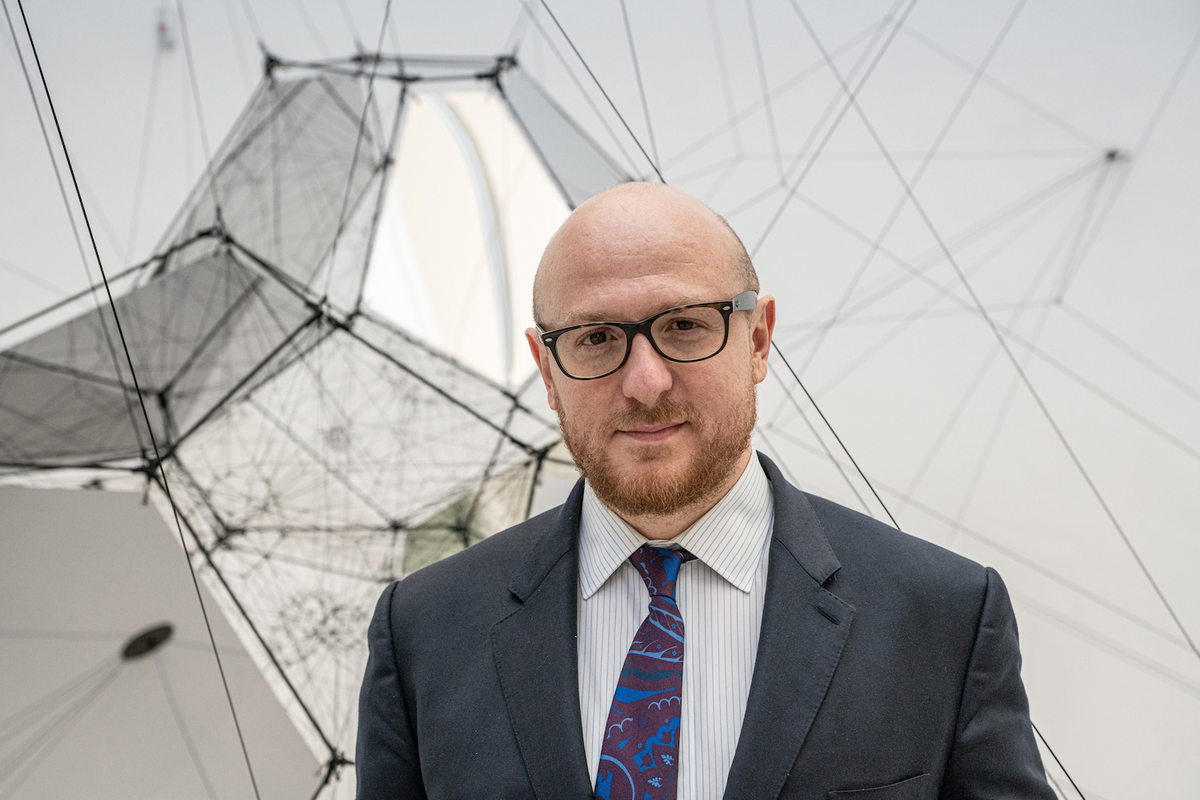
Arturo Galansino is the director of Palazzo Strozzi in Florence© Ela Bialkowska, OKNO Studio
Walter Benjamin, Voltaire and Mozart: art historian Arturo Galansino on his cultural influences
If you could live with just one work of art, what would it be?
Very difficult question! I could pick up a different painting every day for the rest of my life... Today I would choose Whistlejacket (1762) by George Stubbs, one of my favourite paintings in the National Gallery in London. It is an unprecedented full-scale portrait of a rearing chestnut thoroughbred, represented with incredible realism against a plain background. It is like a painted equestrian monument celebrating a racehorse champion and the horse itself. It is an extremely modern image. The large format and its flat background, like a Japanese print, are just unique for animal painting: a revolution in the hierarchy of artistic genres and a romantic celebration of energy and nature. As an equestrian, I would love to have a similar painting of my favourite horse.
Which cultural experience changed the way you see the world?
My discovery of antiquity, when I was a child. I used my imagination to recreate, in a personal fantasy-archaeology, the original shape of a fallen statue or the function of a ruined building: to me it was like time travelling and connecting with unknown worlds. Later, still as a kid, I was mesmerised by some of the exhibitions on old civilisations held in Palazzo Grassi in the 1980s. My passion for art history probably started there.
Which book most challenged your thinking?
A big classic: The Work of Art in the Age of Mechanical Reproduction. Walter Benjamin’s book is arguably one of the most important art essays. Written in the late 1930s, it is a Marxist analysis of the complex relationship between art, technique, media and mass culture. It represents a landmark reflection about art facing technological progress and social change. Today, in a different historical context and within a much wider range of art practices, this book still represents a valuable invitation to think about art and society.
Which writer or poet do you return to the most?
I have always had an unlimited passion for Giacomo Leopardi, both as a poet and as a philosopher. In this pandemic crisis, Leopardi’s Small Moral Works look so modern because of his non-anthropocentric point of view about nature and his rational pessimism about human progress.
What are you reading, watching, listening to or following that you would recommend?
In this dark time, living in loneliness and stillness, I find relief diving into 18th- and early 19th-century lightness and wit. I travel with Voltaire in a traumatised and divided Europe, I wander with Stendhal in post-Napoleonic Italy and I explore all the shades of human feelings through Mozart’s Italian operas. I dig into the 1960s and 1970s online archives of the RAI (the Italian national television) searching for the highest standards of cultural entertainment. It is a rich treasure where you can find Pier Paolo Pasolini discussing with Alberto Moravia the role of literature, or Alberto Arbasino moderating intergenerational duels of intellectuals. I wonder if this kind of programme would be possible today.
Who is the most overrated cultural art figure and who is the most underrated?
I often worked on lesser known masters. The two exhibitions on Giovanni Battista Moroni, which I co-curated with Simone Facchinetti (at the Royal Academy in 2014 and the Frick Collection in 2019), introduced to international audiences one of the most overlooked Renaissance painters. It was an attempt to offer a broader art history to a large public. Sometimes art history should be more adventurous: there are so many great artists to rediscover. I find it more difficult to point out some overrated figures. The history of taste is like a rollercoaster. How many once successful artists disappeared from our radars and then came back acclaimed by intellectuals and collectors? And how many are disappearing now? Let’s read Francis Haskell’s studies: their importance will never be overrated.
What is art for?
Surviving.


No comments:
Post a Comment